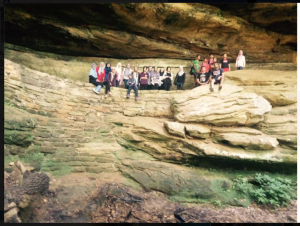“She’s also amazing at presentations and should probably get a JD/MD joint degree,” a peer wrote about me after a debate activity in our small group session. I have always been aware of my public speaking ability and have seen it as a talent I can use to benefit others. I enjoy being on stage, holding the microphone, having all eyes set on me and using my body language and tone of voice to deliver my point. My peer’s comment reflected my own desire to use this ability to enrich my career and give back to the community.
In college, I was invited to deliver a talk on Islam at a public middle school. I understood the sacredness of that stage through which I was to deliver a message to the young minds. I took it as an opportunity to create a spirit of interfaith harmony and mutual respect. For the first time, I took my skill beyond a mere competition and used to it to leave a lasting impact on the future generation. Since then, I’ve delivered multiple motivational speeches within my community and have coached the youth in public speaking, fostering in them the confidence and skills to address an audience. My formula is simple: write your speech yourself, keep it short and memorize your speech so your hands are free to gesture. I have seen a tremendous growth in the skills of my youth and am excited to see how this growth will help them in their professional lives.
My public speaking skill has also helped me in my career. I feel confident when presenting cases on rounds and can focus on compiling well thought-out differential and plan. I’ve enjoyed presenting my research poster at conferences and speaking at my free clinic’s’ fundraising dinner, describing our current work and future directions. Furthermore, understanding the audience as a public speaker has translated into successful teaching skills. After I substituted for a kindergarten teacher at our Sunday School last week, a parent inquired with amazement what my teaching method was that kept students engaged and entertained. My teaching skills have also allowed me to effectively counsel patients on sleep apnea and fibromyalgia during rotations.
I see myself continuing to teach as an attending physician and public health activist, presenting lectures to medical students, teaching residents in a clinical setting and delivering seminars to general audience on preventative topics in ophthalmology. Even during residency, my presentation skills will help me deliver effective case presentations at didactic sessions. More importantly, my teaching skills will help me explain new diagnoses to patients, counsel them on treatments and coach them on disease prevention. Medicine is a career where physicians are constantly engaged in some form of teaching, either to their peers, to students or to their patients. My public speaking skills will allow me to fulfill these roles in my career and will also continue to be a form of public service as I mentor youth and address audiences on topics that affect us all.















